Video blogger Lalji Kurmi is waiting to go viral.
It’s an unusual dream for a resident of India’s oldest coalfield, Jharia, where fires rage underground, bare trees stand guard morosely around mines spewing dust and fumes – and where coal has provided work for at least four generations.
Kurmi (32) was the first in his family to get an education: a diploma in mining. Now he and many other young people in the region want to leave their soot-blighted lives behind, even as coal production soars.
But they face an uphill struggle in an area where there is no other thriving industry.
READ MORE
Kurmi travels to nearby towns and makes videos showcasing visitor attractions such as markets, temples and fairs, which he uploads to his YouTube channel in the hope of winning more views and subscriptions to draw in advertising and generate revenue.
“My father operated wagons that carry coal. But I don't like this work. You inhale fumes all day and live in fear of fatal accidents,” said Kurmi, sipping tea from a clay cup at a roadside eatery.
[ Cop27 explainer: Big winners and losersOpens in new window ]
“I tried getting a job in railways, the army, but couldn't qualify. I have got some fame among locals from my videos and I like it,” said Kurmi, whose YouTube channel has 4,000 subscribers.
“If one video goes viral, life will take off,” he said optimistically.
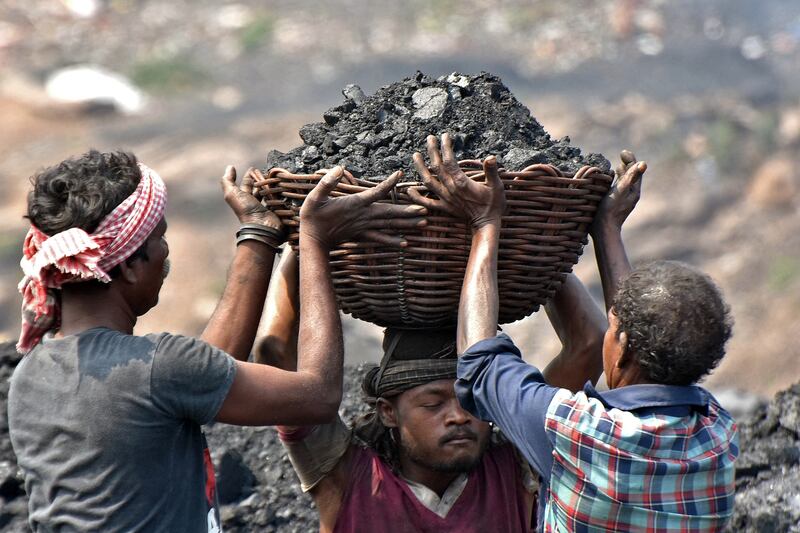
Jharia is synonymous with the coking coal used in steelmaking, a valuable commodity in India that imports more than 57 million tonnes of it annually, spending upwards of 450 million rupees (€5.1 million), government data shows.
Daily coal production in Jharia – where technical issues mean only about a third of its more than 100 mines are functional – this year jumped to 100,000 tonnes, up from an average of 80,000 tonnes until 2021, local mining officials said.
India is boosting coal production nationwide to cut import costs and meet rising energy demand.
Despite the upward trend, the eastern state of Jharkhand, where Jharia is located, announced an effort in November to study the impacts of expected future coal-mine closures on the local economy and its people.
[ Cop27: Deal reached to set up fund for developing countries hit by climate crisisOpens in new window ]
The announcement of a new “Sustainable Just Transition Taskforce” pointed to India's commitments, made on the global stage, to cut climate-heating emissions to net zero by 2070 and reach 500 gigawatts of renewable energy capacity by 2030.
With 13 of Jharkhand’s 24 districts rich in coal reserves, preparation for a future without the polluting fossil fuel must start now, said Ajay Kumar Rastogi, chair of the taskforce, which he said was the first such body in any Indian state.
I pick coal as it funds my travel to the university. I don’t want to do this. I want a job to serve my country
— Aarti Paswan
“Jharia is one of the oldest coalfields and the entire economy revolves around coal. Once there is withdrawal, there will be an impact. The production peaks will be followed by decline,” Rastogi said.
The taskforce wants to plan for change across the entire “coal ecosystem” to ensure no one is left out and even those who illegally scavenge coal – not just formal and informal workers – have livelihood opportunities after mining ends.
“It is the duty of the state government to take care of its every citizen,” Rastogi said.
India is one of three new countries rich nations are talking to about forming a “Just Energy Transition Partnership”, something already agreed upon for South Africa and Indonesia.
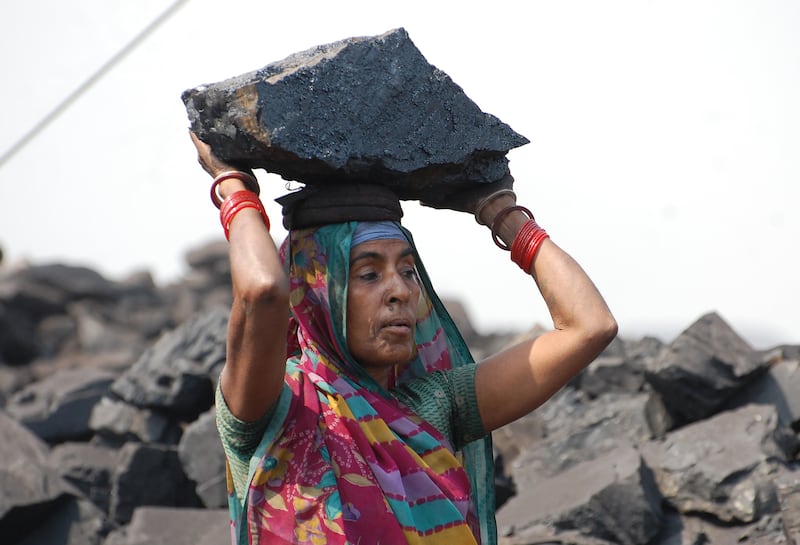
Any deal ought to involve identifying and helping all those who now depend on the coal industry, not just its workers, experts said.
“The funding that comes should not just be for renewable [energy] projects but also in the form of grants for people who will be most impacted,” said Deepthi Swamy, climate lead with think tank WRI India.
Such partnerships are “not just about transitioning to clean energy but also about how we ensure these financing mechanisms address social safety nets”, she said.
Yet a future beyond coal appears a distant prospect in Jharia, where children walk to school through smouldering rocks and mothers scavenge coal to pay for their tuition.
All we will be left with is the debris of mines. Our lives are over, but the future of our children must be protected
— Sanjay Kumar Pandit
Posters in smoke-filled neighbourhoods offer courses in commerce and science, as dreams of a greener life begin to take root in the burning coalfield.
Aarti Paswan (21), a postgraduate student at a university 25km from home, hopes to pass the exams to enter India’s Border Security Force, inspired by a Bollywood film she saw as a child that showed soldiers braving bullets to save their country.
But, for now, she must figure out where to bathe after the canal she used before was cut off by hillocks of debris deposited from recent mine excavations.
“I pick coal as it funds my travel to the university,” she said, standing near stoves belching out smoke in Jharia's Golakdhi settlement. “I don't want to do this. I want a job to serve my country.”
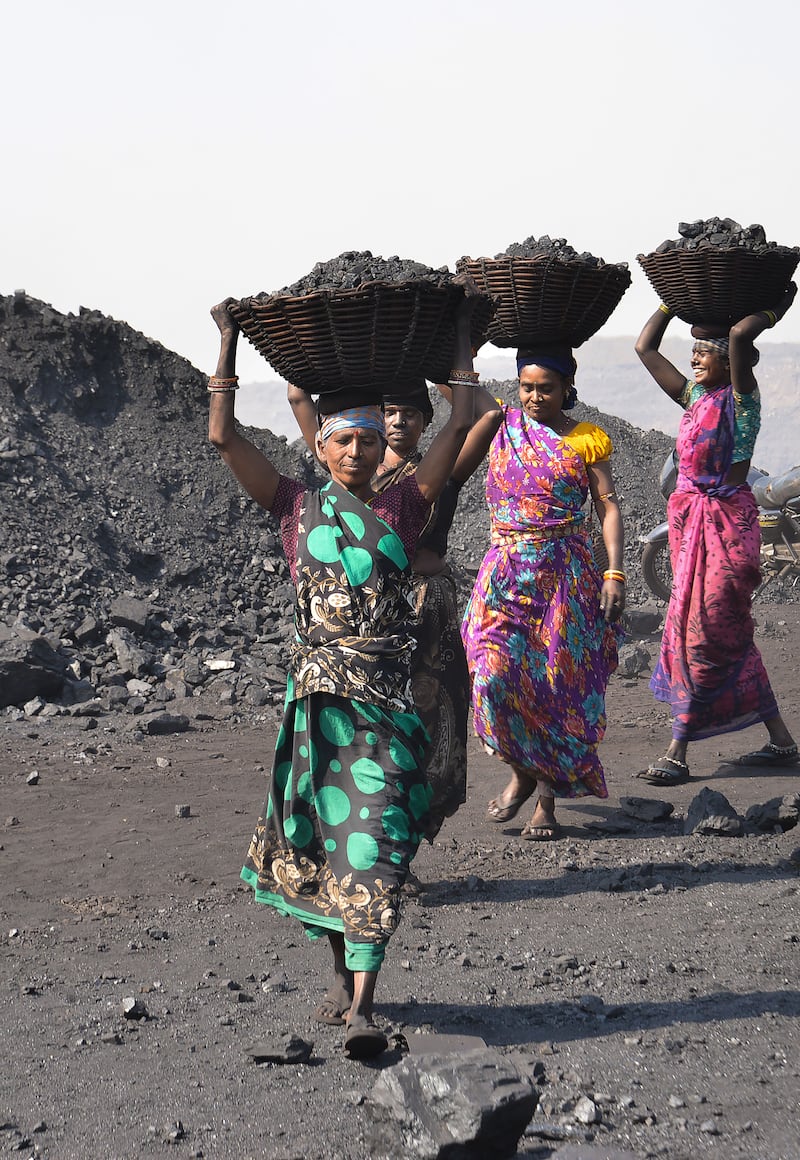
At the national and local levels, moving away from coal will mean tackling how to replace jobs in coal-reliant regions like Jharia, where the first literate generation has emerged and is seeking alternative work, analysts said.
Parents who inhale toxic fumes, gather coal in baskets and are forced to buy drinking water daily do not want their children to inherit this kind of life.
They see coal not only as a polluting resource but one that stopped yielding decent jobs and money years ago.
Sanjay Kumar Pandit (35), who picks coal illegally, said local people had tried to find jobs in mines but outsourcing companies were bringing in labour from other states.
Pandit, whose father was an informal mine worker but earned fixed weekly wages, said the future was even more bleak for the next generation, as Jharia's coal reserves will not last forever.
“All we will be left with is the debris of mines,” he said. “Our lives are over, but the future of our children must be protected.”
India this year announced its first plan for a socially fair shift away from coal production in areas where mines have been shut, and the federal coal ministry refers to “just transition” in its action plan for 2022-23.
Although the government has announced an expansion of coal mines and new coal-fired power plants to ensure energy security in the next few years, it plans to reduce the share of coal in its overall energy mix by the end of this decade.
Coal accounts for nearly half of installed power capacity in India, while renewable energy sources including solar and wind provide about 30 per cent. The country aims to meet 50 per cent of its energy requirements from renewables by 2030.
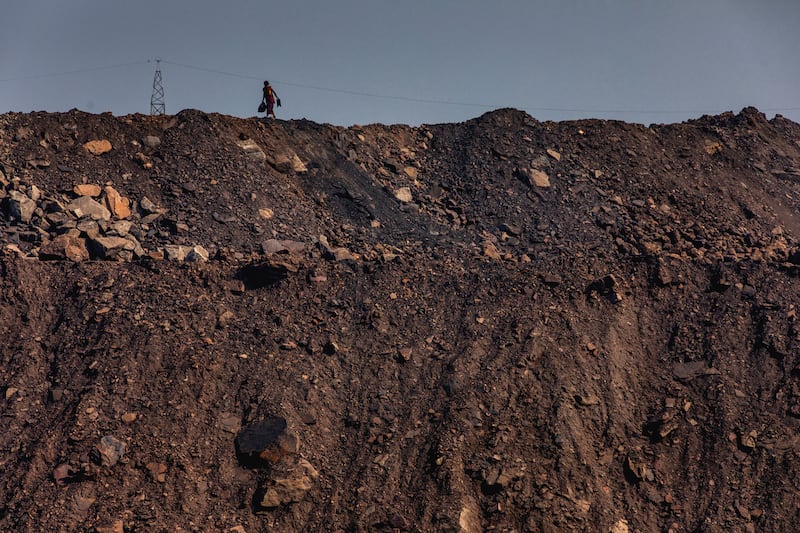
Santosh Patnaik, who manages fair transition programmes at campaign group Climate Action Network South Asia, said young people in coal communities want to break out of the grinding cycle of poverty their families were trapped in for decades.
“This is a generation ready to move away from coal, which is encouraging. A just transition plan needn’t wait for mines to close – it is needed now. Jharkhand could set an example for other states,” said Patnaik.
For now a layer of dust, smoke and soot hangs over Jharia, its coalfield dotted by multiple fires – 595 of them, according to the official count. In some places huge flames leap out of coal pits, while smaller fires burn in other areas, like decorative torches in a seaside resort.
The fires, some of which have burned for a century, were caused by opencast mining, a method that has largely replaced underground mining in the past two decades, exposing large volumes of coal to the air.
This generation is more aware of what is happening across the world. They have access to the internet and realise the potential outside coal
— Ajay Kumar Rastogi
The type of coal found here is quicker to ignite, said researchers at the Indian Institute of Technology-India School of Mining (IIT-ISM) in Dhanbad district, where Jharia is located.
The fires have hollowed out parts of the earth, causing concrete roads and homes to cave in over the past 20 years and resulting in deaths.
The numbers vary, with one local activist putting the death toll at 45 in Jharia while officials estimate it at fewer than 20.
Official surveys show that the fire area, which once spread over 8sq km or nearly 2,000 acres – the size of about 1,000 soccer fields – has shrunk to 1.8sq km.
Several fire areas have been excavated and the debris piled up into hillocks, known as overburdens, where researchers say fires continue to burn.
Some 55,000 families – or at least 200,000 people – have been affected by the fires, according to a 2004 estimate that is still considered to be the official count of the number of people who need to be relocated.
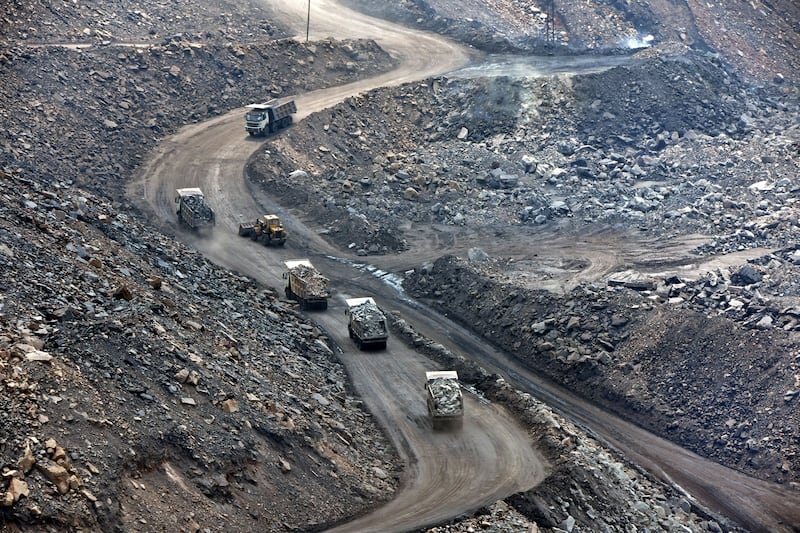
Of these, only 4,000 families have so far moved to a colony built two decades ago, about 8km from the mining area.
Even though their neighbourhoods resemble a war zone, people resist moving to the colony, citing a lack of facilities such as drinking water and proper drains.
But their main concern is that relocating will disconnect them from the mining area that provides their income.
The district administration, responsible for the upkeep of the existing colony, plans to create a municipal body to manage its maintenance, officials said.
It has also engaged global consultancy firm Ernst & Young to design a skills development plan to help Jharia locals find new jobs.
As part of this, their employment interests are being mapped, and the administration is working on skills training for young people, as well as moving families out of high-risk fire areas, said Sandeep Singh, Dhanbad district's administrative head.
But quick and easy solutions are elusive because of a lack of any significant industry other than coal.
In addition, Jharia falls inside the Dhanbad municipal limits and so is not designated as a rural area, meaning residents are excluded from the state-run rural jobs scheme that offers 100 days of paid labour every year.
DD Ramanandan, general secretary of the All India Coal Workers Federation, said Jharia faced a complex problem in creating new sources of income.
“Other coal towns have thermal power plants, small industries and also open space. Here, there is no space between habitations and coalfields and there is nothing else ... but coal,” he said.
Fires and mines can be seen from Jharia's roadsides, some less than a mile from busy markets, and narrow lanes lined with smoke-belching coal stoves snake through homes leading to the burning pits.
Shiv Balak Paswan, vice-president of non-profit group Jharia Coalfield Bachao (Save Jharia Coalfield), said opencast mining had helped locals, despite exacerbating fires, as it opened up more reserves, making coal more accessible to those who gather it illegally because they have no other option to earn a living.
Past efforts to douse the flames have included sealing fire sites with soil and pouring liquid nitrogen and water on them – but those methods have proved either ineffective, costly or dangerous.
IIT-ISM professor Ram Madhab Bhattacharjee said the fires not only put nearby residents at risk but are causing India to lose precious coking coal.
Researchers at IIT-ISM have proposed producing liquid nitrogen locally to save on the cost of ferrying it in by tanker.
But effectively eliminating the fires would also require evacuating residents from the affected area, many of whom are reluctant to move.
“Attempts to do so can cause unrest. This is a big social challenge,” said Bhattacharjee.
Mining in Jharia began about a century ago and the area was flush with coal jobs until the early 1990s, drawing workers from neighbouring states to help operate and manage its mines.
The workers' neighbourhoods that sit next to the mines sprang up four to five decades ago, around the same time private mines were taken over by the government.
Families have stayed there even as jobs have dried up with the mechanisation of mines and outsourcing to private labour agencies who source workers from other states to keep costs low.
Local activists estimate that nearly 100,000 people scavenge coal due to a lack of other jobs, and even those who do tough work like loading coal on to rail wagons miss the earlier days and lament the dearth of alternative options as education levels have improved.
“I wanted to join the police but there are no vacancies,” said Govind Bavri (30), the son of a coal loader who studied up to 12th grade and now works as an attendance clerk with a construction company for a monthly salary of 8,000 rupees (€90).
Jharkhand, one of India's most impoverished states, has announced several plans to improve living conditions and job opportunities, but they have not succeeded, locals said.
Activist Balak has sought cash compensation from the state and federal governments of up to two million rupees for each family relocated from the fire area, to make up for their lost livelihoods, but is still awaiting a response.
Meanwhile, the expanding mines are swallowing more homes, and their inhabitants are also being asked to move, swelling the number of families that need to be relocated, Balak said.
In the next two years, the region’s newly announced just transition taskforce aims to study work opportunities in sectors like agriculture, forestry and renewable energy, as well as financing models to help small and medium-sized businesses set up shop.
Taskforce head Rastogi said mine closures would escalate hunger and fuel social unrest – but once coal production is phased down, the land could be put to better use to generate jobs for young people.
The taskforce will look at introducing biofuel plants, solar energy projects and mining tourism that could help restore the scarred environment while creating work for locals.
“This generation is more aware of what is happening across the world. They have access to the internet and realise the potential outside coal. The biggest challenge would be to find alternatives for them,” said Rastogi.
Some young men have migrated to cities to work on construction sites, but the high cost of rental accommodation and food deters many from leaving.
A few kilometres from the burning coalfields, at a busy junction in the town of Dhanbad, a state-run institute runs free courses on fashion design and beauty care. A few of those enrolled are from Jharia.
Anu Kumari (17), is learning to thread eyebrows and do facials, and hopes to find a job at a beauty parlour one day. “I want to go beyond coal, develop a personality,” she said.
Suman Kumari (21), one of an earlier batch of students, was placed at a beauty parlour in Patna in neighbouring Bihar state, but did not take up the post as it was too far from home and she would have had to spend all her wages on rent and food.
She now picks coal but has formed a girls' dance group, and films and uploads their performances to YouTube.
She is also waiting to be noticed – like video blogger Kurmi – and hopes a television dance reality show will discover her talent.
Their parents, meanwhile, are seeking more concrete action from the government to improve their coal-dependent lives, to train their offspring and to build cleaner industries that can create more job opportunities.
Anita Devi, a 32-year-old mother of four, illegally gathers coal for nearly 12 hours a day near the Gesadi mine, selling it in sacks for 100 rupees (€1.14) each.
As she works amid burning seams of coal, her nails, face and feet are black with ash – but she sees the relentless work as the only way to secure a better future for her children.
“I don’t want them to have my life. I will turn black like coal, but I suffer every day so my children don’t,” she said. “I will do anything to ensure they study.” – Thomson Reuters Foundation
(c) Copyright Thomson Reuters 2022














